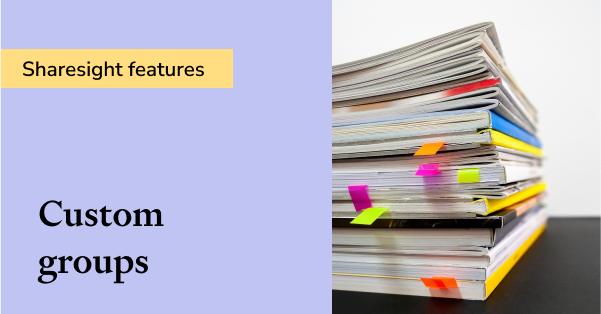Top insights from the ASX Australian Investor Study 2020
2020 has been an extraordinary year for markets and the ASX Australian Investor Study 2020 (AIS) has picked up on a number of interesting trends that are important for Australian investors to be aware of.
Read below for the key takeaways from this year’s AIS, as well as the recording of Sharesight’s webinar with the ASX where they presented additional insights.

What is the ASX Australian Investor Study?
The AIS is a comprehensive study of Australian investors the ASX has been conducting on a regular basis for over 30 years. The study has a focus on ownership of investments, trading behaviours, risk profiles and attitudes of ordinary Australians investing outside their institutional superannuation.
For this year’s study the primary field survey for the study was conducted in January prior to the COVID market downturn, and was followed up with a pulse survey in May, to measure changes in investor attitudes and investing behaviour.
Retail investing is widespread in Australia
Australia remains one of the largest retail markets per capita worldwide, with 46% adult Australians invested in either a listed or unlisted capacity (9m) and of those that choose to invest, 74% hold listed investments. This willingness to invest illustrates that Australians believe in the efficiency and efficacy of listed markets as a source of investment returns.
Australian investors embrace equities
As with the previous study in 2017, the number one held investment is Australian equities, with 58% of investors holding this asset class. The rise of ETFs did not go unnoticed either, now being an equal second of the investments held on exchange with international shares (15%). This is consistent with the rise of a Next Generation of investors, with a strong preference to both Aussie equities (38%) and ETFs (20%). In November 2010, there were only 38 ETFs on exchange and this number has grown to 217. Notwithstanding a difficult economic and market background, the FUM of the Australian ETF market has grown from $66bn at the start of 2020 to $71bn currently.
COVID shifted investor expectations
As previously mentioned, a pulse survey was conducted in May to observe covid19-induced shifts in investor behaviour. An obvious shift was noted in the risk appetite of Australians. The proportion of people wanting stable returns (down 7%) or moderate volatility (up 12%) saw the most obvious shifts, where the preference of guaranteed returns fell over 11%. The overall takeaway from the COVID market volatility was although people’s return expectations fell, it did not stop them from investing (median expectations fell from 8.4% p.a to 5% p.a). Reverting back to the initial principles of investing shows us that diversification lowers your overall portfolio risk for a given return. The research has shown that since the emergence of COVID, Australians have become more focused on diversification and risk management as well as sustainability of returns. The AIS also showed that a significant proportion of investors are focused on building a portfolio with long term goals in mind, rather than short-term trading ideas.
New investors are increasingly women
The increase in female investing is perhaps the most encouraging finding from the AIS, making up 45% of total new investors over the last 12 months. The research shows that the greatest fears women hold when it comes to investing outside of general market volatility are the fear of underperformance, fear of hidden fees, not knowing what investments to select, and money being tied up in investments. Overcoming these fears is often a case of investment psychology and education (using information resources, seeking professional and trustworthy advice). Another potential cause of female aversion to seeking financial advice may be due to the Hayne Royal Commission, where issues around sound financial advice were highlighted in the media.
Australian investors view financial advice positively
Australians have a positive attitude towards receiving financial advice, with over half of current investors willing to seek advice and 70% of those who have not yet invested. The general finding of the study is that Australians are open to receiving advice from some sort of financial professional, be it an adviser, accountant or wealth manager, but there are barriers to achieving this outcome. Of the investors surveyed, 25% claim they cannot find a suitable adviser. To help remedy this problem, ASX has launched a ‘Find An Adviser’ tool on the new ASX website, whereby users can search for registered financial advisers that are licensed by ASX brokers (also known as Trading Participants).
Almost 30% of Australians sought advice from their financial adviser over the last 12 months, but the most obvious trend uncovered by the AIS has been the uptake of micro-savings apps or online platforms such as ‘robo’ advice, with over 20% over respondents using this medium for investing over the last twelve months.
FURTHER READING

8 ways to use Sharesight's custom groups feature
This blog explains our custom groups feature, including strategies that can help you gain deeper portfolio insights and make more informed investing decisions.

You can time the market – and ETFs are the way to do it
Marcus Today founder and director Marcus Padley discusses timing the market, and how investors can do this using exchange-traded funds (ETFs).

Morningstar analyses Australian investors’ top trades: Q1 2025
Morningstar reviews the top 20 trades by Australian Sharesight users in Q1 2025, and reveals where their analysts see potential opportunities.